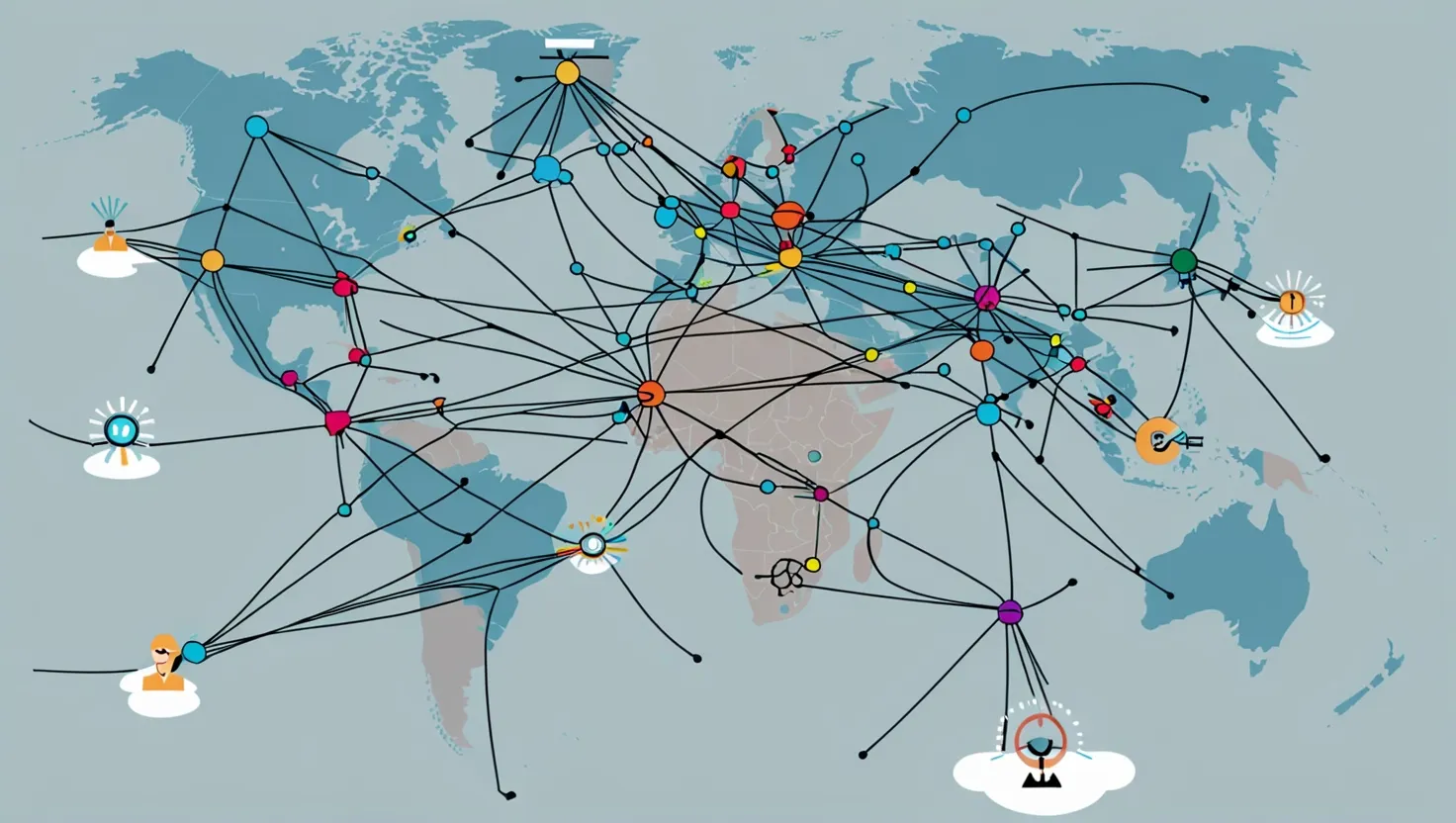As we reflect on the dynamic landscape of global trade in 2024, it’s clear that several macroeconomic factors are reshaping the way goods and services are exchanged across the globe. These factors, often interlinked, are not just mere trends but fundamental shifts that are redefining the rules of international trade.
Shifting Geopolitical Alliances and Trade Agreements
Geopolitics has always been a significant influencer of global trade, but 2024 has seen this impact intensify. The ongoing tensions between major powers, such as the U.S. and China, have led to a reconfiguration of trade alliances and agreements. This is evident in the increased tariffs imposed by the U.S. on Chinese exports, including critical sectors like electric vehicle batteries and solar panels. As the famous economist, Joseph Stiglitz, once said, “Globalization has made the world more interdependent, but it has also made it more vulnerable to economic disruptions.”
How do these geopolitical tensions affect your business? Are you prepared for the potential ripple effects on your supply chain?
The rise of new trade agreements and the revision of existing ones are also noteworthy. For instance, the World Trade Organization (WTO) has revised its global trade growth forecast multiple times in 2024, reflecting the resilience of demand despite these challenges. This resilience, however, comes with a caveat – the need for businesses to be highly adaptable in a rapidly changing geopolitical environment.
Impact of Climate Change on Supply Chains and Resource Availability
Climate change is no longer just an environmental issue; it has become a critical economic factor. Extreme weather events, rising sea levels, and changing weather patterns are disrupting supply chains and affecting resource availability. This is particularly evident in the agricultural sector, where unpredictable weather conditions are impacting crop yields and food security.
As the CEO of Patagonia, Rose Marcario, put it, “We’re in the business of saving the planet, and that’s a pretty big job.” Companies are now integrating climate resilience into their business strategies, investing in sustainable practices and diversifying their supply chains to mitigate these risks.
How is your company addressing the challenges posed by climate change? Are you exploring sustainable practices to ensure long-term viability?
Technological Advancements in Logistics and Transportation
Technology is revolutionizing the logistics and transportation sector, making global trade more efficient and cost-effective. Advances in artificial intelligence, blockchain, and the Internet of Things (IoT) are streamlining supply chains, reducing transit times, and enhancing the security of shipments.
For example, the use of autonomous vehicles and drones is becoming more prevalent, especially in the last-mile delivery segment. This not only speeds up the delivery process but also reduces labor costs and enhances customer satisfaction.
As the co-founder of FedEx, Frederick W. Smith, noted, “The key is to keep company with people who uplift and inspire you, whose presence calls forth your best.” In the context of logistics, this means partnering with innovative tech companies to stay ahead of the curve.
Are you leveraging the latest technological advancements to optimize your logistics operations?
Demographic Changes in Major Economies
Demographic changes are significantly influencing consumer behavior and market demand in major economies. Aging populations in countries like Japan and Europe are driving demand for healthcare services and age-related products. On the other hand, younger populations in countries like India and Africa are fueling growth in consumer goods and technology sectors.
Understanding these demographic shifts is crucial for businesses looking to expand into new markets. For instance, companies are now tailoring their products and services to meet the specific needs of aging populations, such as home healthcare services and age-friendly technology.
As the demographer and economist, Peter Drucker, said, “The best way to predict the future is to create it.” By anticipating and adapting to demographic changes, businesses can create new opportunities and stay relevant in a changing world.
How are demographic changes impacting your target market? Are you adjusting your product offerings accordingly?
Evolution of Digital Currencies and Cross-Border Transactions
The rise of digital currencies and advancements in cross-border payment systems are transforming the way transactions are conducted globally. Blockchain technology and cryptocurrencies like Bitcoin are reducing transaction costs and increasing the speed of international payments.
This evolution is particularly beneficial for small and medium-sized enterprises (SMEs) that often face high transaction fees and lengthy processing times when engaging in international trade. Digital currencies are leveling the playing field, enabling SMEs to compete more effectively in the global market.
As the entrepreneur and investor, Tim Draper, stated, “Bitcoin is a new way of thinking about money, and it’s here to stay.” The integration of digital currencies into business operations is no longer a novelty but a necessity for staying competitive.
Are you considering the adoption of digital currencies in your business operations? How could this impact your cross-border transactions?
Rise of Regional Economic Blocs and Localized Production
The trend towards regional economic blocs and localized production is gaining momentum. This shift is driven by the desire to reduce dependency on global supply chains, which have proven vulnerable to geopolitical and environmental disruptions.
Regional trade agreements, such as the African Continental Free Trade Area (AfCFTA), are fostering intra-regional trade and encouraging localized production. This not only promotes economic growth within regions but also enhances resilience against external shocks.
As the former Secretary-General of the WTO, Pascal Lamy, noted, “Regional trade agreements are a way to move forward when multilateral agreements are stuck.” By focusing on regional trade, countries can create more stable and predictable economic environments.
How is the rise of regional economic blocs affecting your business strategy? Are you exploring opportunities for localized production?
Adapting to the New Landscape
In this complex and dynamic environment, businesses must be agile and proactive to thrive. Here are a few key strategies for adapting to these macroeconomic factors:
- Diversify Supply Chains: Spread your supply chain across different regions to reduce risks associated with geopolitical tensions and climate change.
- Invest in Technology: Leverage technological advancements in logistics, transportation, and payment systems to enhance efficiency and reduce costs.
- Understand Demographic Shifts: Tailor your products and services to meet the changing needs of different demographics in your target markets.
- Explore Digital Currencies: Consider adopting digital currencies to streamline cross-border transactions and reduce transaction costs.
- Focus on Regional Trade: Engage with regional economic blocs and consider localized production to enhance resilience and predictability.
As the business magnate, Warren Buffett, advised, “Price is what you pay. Value is what you get.” In the context of global trade, understanding and adapting to these macroeconomic factors is crucial for extracting maximum value from your business operations.
In conclusion, the landscape of global trade in 2024 is marked by significant shifts that present both opportunities and challenges. By understanding these factors and adapting accordingly, businesses can not only survive but thrive in this new era of global trade.
So, the question remains: Are you ready to adapt and lead in this evolving global trade environment?






